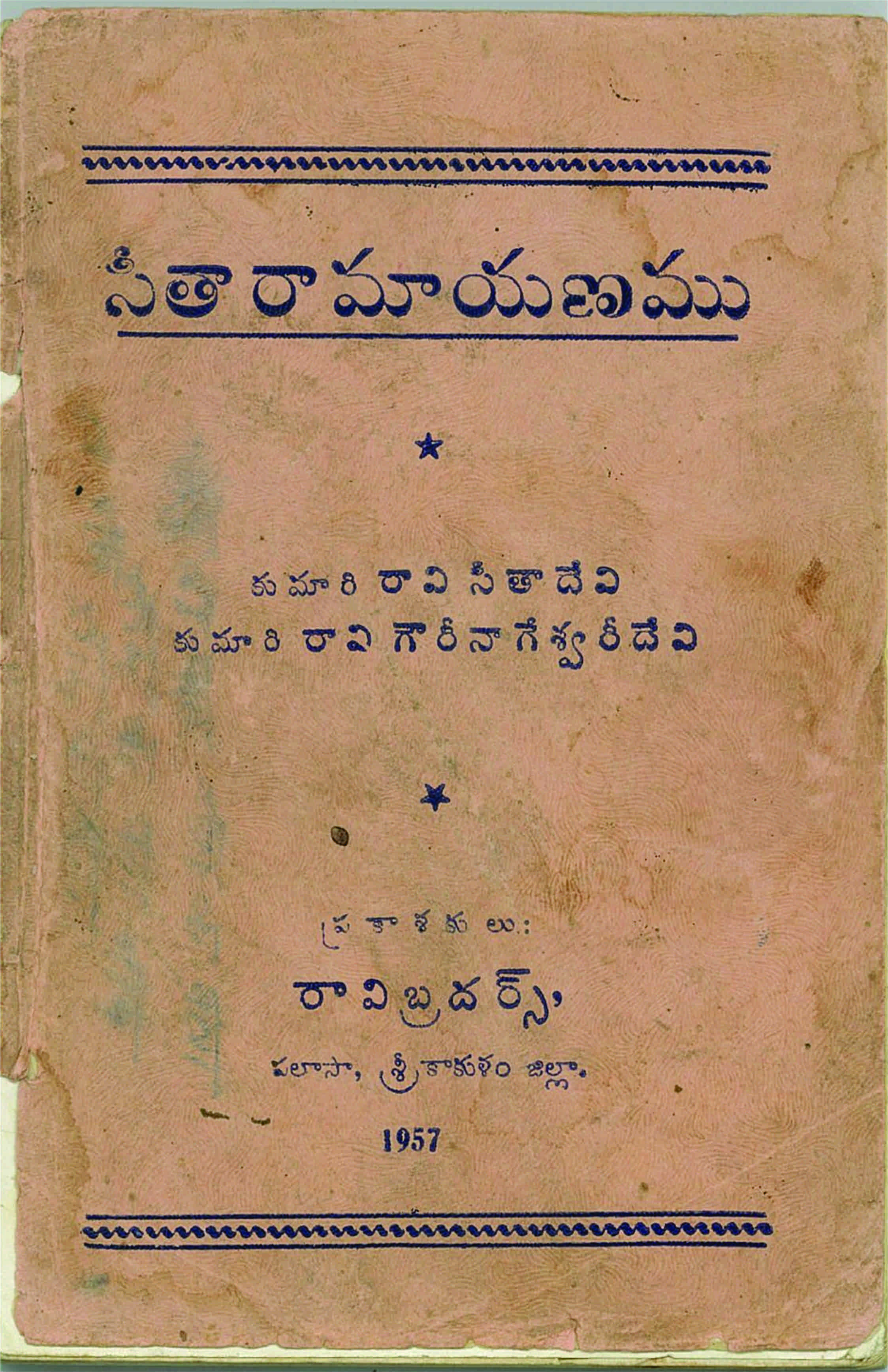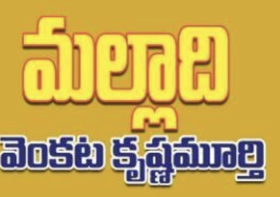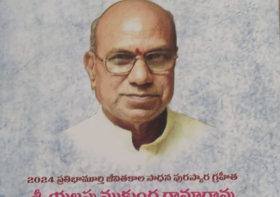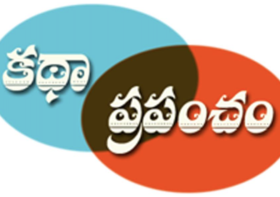A forgotten legend: Ravi Sita Devi (1931-1945)

Written by: Elchuri Muralidhara Rao
*****
It is believed that the latent impressions of actions are the cause of the future birth and the praarabdha karma which started the present life will remain active till the end in order to fructify itself. As life is but a continuation of the past many births, the past actions lead to the present consciousness of the Self and its realization initiates the efforts for renunciation. The jivan-mukta who had renounced the fruit of all actions and is satisfied with the nectar of knowledge and thereby had accomplished all the desired tasks has nothing else to do and leaves the mortal coil for absolute emancipation. The life and mission of Ravi Sita Devi is a bright illustration of this expression in Advaita Vedanta.
Sita Devi was born in 1931 to Sri Ravi Rama Murthy Pantulu, a pious Velanati Brahmin of Yelamanchili Estate who was known as a repository of penance (taponidhi) in Srikakulam district. Rama Murthy had participated in the National Movement initiated by Gandhiji as a congress worker and sacrificed all his earnings to organize the Naupada (Ganjam dt.) Salt Satyagraha movement in 1930 under the leadership of Wunnava Ramalingam and Pothapragada Narasimha Rao. At the evening of his life he renounced the worldly interests and opted for a divining path of rumination and spiritual enlightenment. His grandfather Janakiramaiah had built a temple at Kavitha Agraharam in Tekkali and installed the sacred idol of Sri Gowri Nageswara Swamy there. One day, Lord Lakshmi Narasimha appeared in dream to Sri Jagannatha Panditaiah, a Brahmin priest in Guntur and ordained him to tender his pancaayatanam devataarcana (worship material of Siva, Vishnu, Devi, Surya and Ganapati in smaarta homes) to Janakiramaiah. The scholar held it reverentially on his head and arrived on foot from Guntur to Tekkali to deliver the divine offering. Since then it was believed that the Ravi families were endowed with prosperity and became renowned in the country.
Rama Murthy Pantulu practiced anaasakta yoga, a discipline by which one seeks to achieve liberation of the self and union with the supreme spirit or universal soul with an abject lack of personal or any selfish interest. Oftentimes he turned to literature, music and drama for wisdom and solacement. It is this samskaara that manifested later in the form of one or other fine art in each of his four children.
Rama Murthy’s wife Mahalakshmi Devi was the daughter of Yallajosyula Kameswara Rao, a noted lawyer, scholar-activist and freedom fighter of Kakinada. The couple named their children in accordance with the nondiscriminatory perspective of Advaitin-s (monists): Sambasiva Rao, Rama Rao, Gowri Nageswari Devi and Sita Devi. As Kalidasa said, the wheel of time revolves in a circular orbit, causing a turning about of fortunes – what is intended to last for a considerable time would be gone forever the next moment, making it impossible to foresee what is going to happen in someone’s life. While the malevolent aspect of the evilly disposed planets began to inflict suffering, Rama Murthy’s Estate collapsed. He managed to purchase six hundred acres of land in Mandasa Estate of Srikakulam district in 1934 and built a house there. The place is now known as Ramakrishna Puram.
Rama Murthy’s youngest daughter Sita Devi was indeed a child genius. As she was born after the family’s fortunes overturned, Mahalakshmi Devi took care of her education. In that hermitage like home, books were their treasured companions. The mother, herself a noteworthy poetess taught the basics of language and literature like in every Hindu household: wordbooks, abridged dictionaries of synonyms, orthography, religious songs and verses from select texts – all to form an intellectual basis for an extraordinary girl who displayed imaginative power and beauty of thought as a toddler. It was leaping to the eye that a remarkable poetess was in making.
When the little virtuosic girl was three years old, Rama Murthy visited Kakinada with family. There in the alien environs she fell victim to a disease and showed signs of atrophy. Soon her condition deteriorated and the end became imminent. That night the ever merciful lord Sri Rama presented Himself before Mahalakshmamma in a mental picture and prompted her to give Mrityunjaya Rasa as a curative preparation and revealed that the foreordained poem writer would compose Sita Ramayanamu in the most distinctive manner. Miraculously after this the child recovered to healthfulness, crescive like moon in the fortnight of increase.
People who knew the adolescent wonder-worker remember her as a wallflower but a spirited self-observer and shyly introvert. She abstracted herself from the cursory assemblages and liked better the solitude of the hermit that was her home. For the most part of the day she remained silent, musing over the literary creations of noble poets. When she chose to speak, she brought to life the warmth of feeling and the gentle affection of an angel. She was intensely religious, observed holy days and ate little or nothing. She learnt to recite the thousand names of Lakshmi and Vishnu by the time she was six years old and studied their meanings as well. She took the scholastic training on the theory of poetic composition from her mother and immediately started its doctrinal application.
In the first half of 1939, Sita Devi is said to have pictured in mind Kalika Devi, who made it known to her that She was indeed her mother. As a consequence of that the young devotee found an object to concentrate upon, the mind and heart always in rapture. This bestowed on her a supernatural power that remained beyond the grasp of her family members. She had visualized and witnessed the Goddess of Learning and became silver-tongued. She was under the sway of that indescribable light, meditating on it.
At a young age of 9, Sita Devi started composing the ever-inspiring Ramayana in mellifluous Telugu. It is amazing as to how she had gained firm command over the art of versification, the intelligence to turn phrases in great plenty and a rare felicity in the telling of a story. We do not have on hand anything she had written during the formative years that lends by itself to critical exposition. A rationalist cannot but be stupefied at the brilliant display of artistic production and wonder if it could have been the continuation of an assignment that was undertaken in a past birth. Sita Ramayanamu is held to be a colossal work in 40,500 verses, possibly one of the longest of kavya-s in the history of South Indian literature. Celebrated poet-scholar Mahamahopadhyaya Sri Kasi Krishnacharya was filled with admiring surprise when he heard the beautiful poems from this and exclaimed –
“అల్లెనటఁ దొల్లి కుమ్మరి
మొ ల్లట రామాయణంబు మొల్లలు రాలన్
జల్లఁగ దాని నిపుడు నీ
వల్లితివఁట యెంత ధన్యవమ్మా! సీతా!”
It is said that the name of a kavya reveals its inner sense. Discerning readers may at first think the title Sita Ramayanamu brings to mind the authorial designation. According to grammar Rule, the much-venerated female in the system of naming should take precedence over the male praenomen in a dvandva compound. Even the Smriti says, pitur dasagunam maataa gauravenaatiricyate – the mother is ten times worthy of respect than the father, by reason of superiority. Hence the title is justifiable as a story of Sita, before whom even Rama was subservient. Even Valmiki said, sitaayaas caritam mahat – Sita’s life story is great. The narrative of Sita is a monument to the idealism of India. If the ensnarement of Sita by deception and Sri Rama’s subdual of the enemy king Ravana in Valmiki’s grand epic is viewed by some critics as an allegorical reconstruction of a notable happening to spiritually reawaken India, Sita Ramayanamu without any hidden metaphor or allegory signifies the just path of the exemplar couple Sita and Rama, who elevated for us the high esteem of moral values and reinforced our belief in the ultimate triumph of good over evil. In quality it deserves less attention than no other Ramayana in Telugu. Her delineation of love as an emotion is finely spiritual and yet intensely human. Her descriptions are marked by an extraordinary realism of sensation and vividness of touch. While preserving the essential ideality of a theme which was cherished through ages as an elevated conception, she invests it with a higher poetical naturalness, based on genuine emotions of common manhood and womanhood. The narrative does not follow a single original and picks up events and descriptions from a multitude of versions, both Sanskrit and Telugu, thus distinguishing itself by an independent course, making it unbelievably successful, howsoever prodigal for a child of 14 years. It is a typical Andhra work – Sri Rama describes Tirupati (as the journey’s end for a worshipper) and even Srikakulam (the native place of our young poetess) while on his way back to Ayodhya. At the time of Rama’s coronation, the child poetess unabashedly says, the front rows in the auditorium were reserved for Telugu gentry!
Sita Ramayanamu is believed to have commenced in 1940 when Ravi Sita Devi was about 9 years old and completed in 1943. It is an astounding accomplishment for a prodigal daughter to portray the kind of emotions as in Ramayana in pleasantly flowing musical word pictures. The expert process of story-telling in resonant meters, the maturity and deftness in handling various characters and her mastery over the art of versification overwhelms even a seasoned critic. It is unfortunate that the work remains unpublished, leave alone a few loosely edited excerpts in 1957. This printed version, issued from Palasa by her brothers, wrongly denotes Sita Ramayanamu as the joint work of Kumari Ravi Sita Devi and Kumari Ravi Gowri Nageswari Devi on its Cover Page but Sita Ramayanamu is indeed the work of Sita Devi and the rest of the excerpted material is probably their collective effort.
By the end of the year 1943, Sita Devi was engaged in yet another monumental task: a fresh translation of Srimad Bhagavata from Sanskrit. Sri Mahalakshmi Bhagavatamu understandably follows Bammera Potana’s magnum opus but one cannot miss the distinctiveness and the special kind of a feminine interpretation in it. This she composed along with her elder sister Gowri Nageswari Devi who was also a poetess of exceptional merit. Gowri Nageswari Devi seems to have gone to Vizianagaram to study Bhasha Praveena at Maharaja’s Sanskrit College. Her independent works included Venkatachala Mahatmyamu, Srimad Bhagavad Gita, Annavara Mahatmyamu, Sahasra Nama Stotrakadambamu, Sataka Panchakamu etc. Not much is known about her later day contributions. Eminent Telugu poet and Central Sahitya Akademi Award winner Sri Utpala Satyanarayanacharyulu garu once told me that he was approached by the family of Gowri Nageswari Devi to edit her works and see through their printing. Later I gathered that he had accomplished the task and wrote a foreword to Sri Mahalakshmi Bhagavatamu. He wrote to me that the book was published under his aegis but I do not know if it was in full or not. It appears that even he could not rescue Sita Ramayanamu from an undeserving oblivion that it fell into. By the time I could collect a few more details, he passed away in 2007. I heard that the family of Gowri Nageswari Devi shifted to Hyderabad and a mutilated autograph manuscript of Sita Ramayanamu is still in its possession. With the limited resources at my disposal I could not trace their address. Gowri Nageswari Devi seems to have met eminent scholar-writer Sri Jonnalagadda Satyanarayana Murthy garu, Head of the Department of English, SRR & CVR College on 12 June, 1957 and presented him with a copy of Sita Ramayanamu that contained his embellishing introduction. I got this copy from his family when I was a student of his relative in Vijayawada in 1972. It contains 167 cadenced metrical verses from Sita Ramayanamu, 29 verses from Venkatachala Mahatmyamu, 108 from Mahalakshmi Bhagavatamu and a few impromptu poems composed on various occasions. Sri Kuchibhatla Chandrasekhara Sarma prepared concise paraphrases of verses that could not be printed, thus offering us a glimpse into the turn of events in the Frame Text. Even this short publication of 116 pages remained in printing press for more than a couple of years and finally took its present shape in 1957. It would be unfair to find faults in the poetic merit of a child who did not live long to see her great work published and when published, unfortunately contains mistakes and calls for close editing. It would be a tragic loss if Universities and private organizations cannot come together to secure manuscripts and bring to light such great works for the delight of connoisseurs.
In the beginning of 1945, on Magha Suddha Shashthi (Jan, 19 Friday) Sita Devi died after a brief illness, leaving her impressive legacy to pierce through the iron curtains of time for ever.
సీతా రామాయణము
శా. శ్రీకాంతాహృదయేశ్వరున్ రఘువరున్ సీతాయుతున్ గేశవున్
లోకాలోకసమస్తభూతవలయున్ లోకేశ్వరున్ శాశ్వతున్
బాకారిప్రముఖామరావనపరున్ భవ్యున్ బ్రశంసించెదన్
మాకున్ సత్కృప నీప్సితార్థముల సమ్మానంబుతో నీయఁగన్.
ఉ. కామవిరోధిముఖ్యులును గానఁగ లేని పరేశు, విష్ణు, ను
ద్దామ ప్రభావశోభితుని, “దానవసంఘవిరామ! రామ! శ్రీ
రామ! గుణాభిరామ! బుధరాజలలామ!” యటంచుఁ బిల్వ నీ
వేమి తపంబుఁ జేసితివి? యెల్లరకున్ దెలియంగఁ జెప్పవే.
శా. హేలాభుగ్నవిశాలకార్ముకముతో, హేళిప్రభారాశితోఁ,
గాలాంభోధరతుల్యదేహరుచితోఁ గాంచీకలాపంబుతో,
లీలాలోకనవిస్మితాఖిలనృపాలేంద్రాదిసంఘంబుతోఁ
దా లేనవ్వు చెలంగ రాముఁడు సభాస్థానంబునం దొప్పఁగాన్.
చ. అళిసముదాయనీలచికురావృతవక్త్రసరోజయై, సము
జ్జ్వలరమణీయభూషణవిభాసితయై, వరమందహాసయై,
సలలితసుందరాంచితవిశాలవిలోచనయై శుభాంగి యా
యలికులవేణి యెత్తె ఘనమై తనరారు ముఖాబ్జబింబమున్.
సీ. పాటలాంచితమగు పాణిని నున్నచోఁ గమనీయపద్మరాగంబు లయ్యెఁ
జక్క మౌళిని సోఁకు సమయంబునందున లలితమల్లీముకుళంబు లయ్యె
మహనీయనవరత్నమకుటసంస్పర్శచేఁ గరమొప్ప గోమేధికంబు లయ్యె
శ్యామలాంచితదేహసత్కాంతిచే మించి డంబుమై నింద్రనీలంబు లయ్యె
తే. సతతబుధలోకవినుత యౌ జనకతనయ
లీల భువనైక కల్యాణవేది యందుఁ
దనరఁ గరయుగ్మమందు ముత్యముల నిలిపి
తోయజాతాక్షు శిరమునఁ బోయునపుడు.
సీ. పుష్పవాటికలోనఁ బొలుపొందు గద్దియ నలువైన పద్మాసనంబు గాఁగ
భువనైకసౌభాగ్యపుణ్యసత్కారణ దేవేరి సీత వాగ్దేవి గాఁగ
శారికాకీరసంస్తవ్య వాక్యచయంబు రమణీయ వేదగీతంబు గాఁగ
నాసీనులై చుట్టు నలరు సన్మునిసుతుల్ ముదమున నారదముఖులు గాఁగ
తే. బద్మసంభవు చెలువున భద్రుఁ డగుచుఁ
గన్నులకుఁ జాలఁ బండువై కానఁబడును
విరుల వనమును సీతతో వెలయఁ జొచ్చి
చారుతరకీర్తి శ్రీరామచంద్రమూర్తి.
సీ. కావ్యదోషము లెఱుంగనియట్టి నా చేత నిట్టి గ్రంథంబు వ్రాయించినావు
ననవద్యహృద్యంబులగు పద్యగద్యముల్ సూరిలోకము మెప్పుఁజూపినావు
దివిజసంతతికైనఁ దెలియని నీ రూప మంచితకృపను జూపించినావు
భక్తవత్సలకీర్తిఁ బాటించి నీవు నా యీప్సితార్థంబుల నిచ్చినావు
తే. చేరి మ మ్మెల్లవేళ రక్షించినావు
భక్తసత్కల్ప బిరుదంబుఁ బట్టినావు
సకలబుధజనపక్ష! విశాలవక్ష!
పంకజాతాక్ష! నిఖిలసద్భక్తరక్ష!
వేంకటాచలమాహాత్మ్యము
సీ. అర్థార్థులకు విశేషార్థంబు లొనఁగూర్ప నల కల్పకము వేంకటాచలంబు
ఘనవిపద్ఘోరాంధకారముల్ సమయింప నర్కబింబము వేంకటాచలంబు
కడిఁదిమై భోగభాగ్యప్రసిద్ధి వహింప నమరధేనువు వేంకటాచలంబు
కలుషసంసారమేఘంబులన్ విరియింప ననిలతేజము వేంకటాచలంబు
తే. భూతదైత్యపిశాచాది భీతి నడఁప
నచ్యుతుని చక్ర మా వేంకటాచలంబు
భూరిసద్భక్తతాపనివారణంబు
నతులసౌఖ్యాస్పదము వేంకటాచలంబు.
ఉ. కోరికలున్న చోట, నఘకోటు లడంపఁ దలంచు చోట, వి
స్తారభవజ్వరాదులను శాంతి వహింపని చోట, భూతముల్
సేరిన చోట, లేవడిని సేఁగి వహించిన చోట భక్తమం
దారుని వేంకటప్రభు పదాబ్జము లెన్న శుభంబ కూరెడున్.
మహాలక్ష్మీ భాగవతము
శా. అజ్ఞానంబు హరించి గాని గనరా దా పుణ్యు; బ్రహ్మాది వే
దజ్ఞుల్ తత్పరమేశ్వరున్ నిజమనోధామంబులన్ జేర్చి, “స
ద్విజ్ఞానంబున బుద్ధిమూలమున భావింపంగ రా” దందు; రా
యజ్ఞాధీశ్వరు నన్యుగాఁ దలఁచి యీ యజ్ఞంబుఁ గావించితే.
సీ. భాసురఫాలాక్షపావకోజ్జ్వలదీప్తి భూనబోంతరమెల్ల బూరటిలఁగ
కటితటంబునఁ బొల్చు కరటిరాట్చర్మంబు ప్రళయాంధకారంబు పగిది నొప్ప
నవిరల గరళ విఖ్యాత మౌ మెడకప్పు పాకారి నీలవిభ్రాంతిఁ గొలుపఁ
బావనరుద్రాక్షఫణిరాజహారముల్ భూరివక్షంబునఁ బొందుపడఁగఁ
తే. జారుపీయూషకలితార్ధచంద్రరుచులు
జనుల చిత్తంబులకుఁ గొంత శాంతిఁ గూర్ప
నరయ నారదుతో మాటలాడువాని
నా మహాదేవు వీక్షించి రమరవరులు.




Jayasri Jonnalagedda
మురళిగారు ,
తెర వెనుక దాగిన ఆణి ముత్యాన్ని వెలుగులోకి తెచ్చారు . పట్టుమని పద్నాలుగేండ్లు దాటని బాల మేధావి రచనలు చదివే అవకాశం కలిగింది ఆమె రచనలు ప్రాచుర్యంలోకి రావాలని కోరుతున్నాను బహుశ ఆమె కవిత్వం ప్రత్యక్షంగా వినాలని ఆ దేవతలు ఆమెను మననుంచి దూరం చేశారేమో అనిపిస్తుంది .
ఆ బాల కవయిత్రిని మాకు పరిచయం చేసిన మీకు ధన్యవాదాలు
మాణిక్యం
నేడు ఉన్న పరిస్థితుల్లో ,మీ వంటి వారి పోతన, పరిశోధన చాలా అవసరం,మీకు నా నమస్కారములు
Mukundaramarao
Knowing about someone to be remembered, and not sharing that information is a sin. What is the use Knowing but keeping it only with them as secret. Muralidhararao garu did the right thing and hence needs all the appreciation.
Congratulations andi .
Mukundaramarao
లక్ష్మీనరసింహమూర్తి గంటి
మాన్యమిత్రులు శ్రీ మురళీధరరావుగారు.ఆంద్రాంగ్లభాషాసాహిత్యములపై పట్టుగలిగిన సవ్యసాచి.ఒక చిన్ని వజ్రపు తునకకు పదును పెట్టి ఆమె కీర్తిని దిగంతములకు అంతర్జాలము ద్వారా వ్యాపింపజేసిన మహనీయమూర్తి.సీతాదేవిగారి గురించి ఇదివరకు నేను చదివేను.బహుశా విస్మృతకళింగాంధ్ర కవుల గురించి కాబోలు.కానీ ఇంతటి చక్కని గ్రంధానికి ఎంతో చక్కని పరిచయ వ్యాసం వ్రాసి బంగారానికి తావి చేకూర్చారు.సీతాదేవిగారు వ్రాసిన పద్యాలు ఆణిముత్యాలు.”జానాక్యాః కమలాంజలి పుటేయాః …..”అనే శ్లోకం ఎవరు రాసేరో తెలియదుకాని “పాటలాంచితమగు పాణి…..” అనే సేీసపద్యంలోసీతాదేవిగారి ప్రతిభ దిగంతాల మెరిసే ఇంద్ర ధనస్సులాగ మెరిసింది.పలికించెడివాడు చారతరకీర్తి శ్రీరామచంద్రమూర్తి మరి.సీత ముఖాబ్జంబు యెత్తి చూసెనట.చూడదూ మరి.ఆదర్శవివాహానికి ఆదిదంపతులు వారు.మురళీధరరావుగారు గారికి ఏమిచ్చి కొనగలమిటువంటి ముత్యాలు.దోసిలిపట్టి వందనమాచరించుట తప్ప.
ramanaprasad v v
మీ పుస్తకం చాలా బాగుంది . మరి పాత పుస్తకాలు స్చాన్ చేసీ ఉప్ లోద్ చేయండి . రమణ ప్రసాదు
Kasturi
Thank you very much for bringing to light a masterpiece written by a child prodigy. Telugu university must immediately take up the task of publishing Ravi Sita Devi’ book.
Kasturi
gananadhyayi
పూజ్యులు గురుతుల్యులు మురళీధరరావు గారు లాంటి వారికే స్వభావసిద్దంగా ఇలాంటివి సాధ్యపడతాయి. వారికి, పుస్తకం.నెట్ వారికి నా హృదయపూర్వక అభినందనలు, నమస్కారములు. వారి సంకల్పం వృధా కారాదు. ఇంతటి విద్వత్తుగల బాలమేధావుల రచనలను కాలగర్భంలో కలవనీయ కూడదు. ఏదో ఒకటి వెంటనే చేద్దాం. సహృదయులు రసఙ్ఞులు తెలుగు దేశంలో చాలా మందే ఉన్నారు. వారు తప్పక తలొక చేయ వేస్తారు.
Saatyaki So Seshendra Sharma
Sir ! Namaskaram. Entho Arudayina vishayaalni veluguloki techchaaru.
Vyaaasam Lo vishayam oka ethayithe , Mee syli maro eththu. Adyantham aasaktikaramga saagindi.
Dhyanyavadalu / Abhinadanalu
Mee
saatyaki@gmail.com
09441070985,07702964402
P.Santha Devi
Dear Muralidhara Rao garu,
As usual your article is par excellence.I am not able to understand how you gathered this much of information when the Ms.Sita Devi passed away in teens and her works vanished in to obscurity. Your suggestion that Universities should take up this work of identifying this great work of a child prodigy is very much correct. I think a submission to the Telugu University should bring this work in to limelight. In fact many works like this do not see the light of the day because of the bad financial status of the respective families. But your effort is commendable.
with regards
P.Santha Devi
Dr.M.V.Ramanarao
How tragic that such a child prodigy was snatched away by the cruel fate at such a young age!